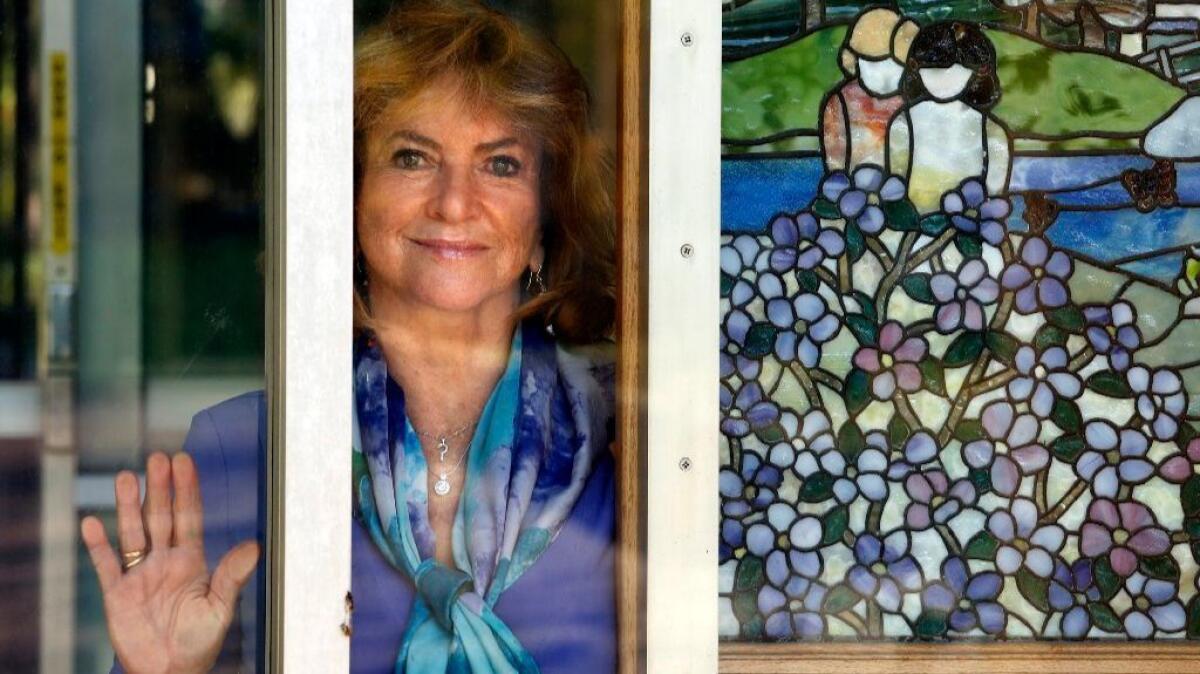Motivated to make a difference, she helped find breakthrough HIV treatments

The gig: From her office on the second floor of the Marion Davies Children’s Health Center at UCLA, Dr. Yvonne Bryson works the phones in her role as protocol co-chair for a global health study on treating babies early for HIV infection. “We have a number of infants enrolled around the world in Africa, South America, the U.S.,” said Bryson, a foremost expert on pediatric AIDS. “The goal is a cure or remission. I’m also starting a new study on the treatment of adolescents.” Bryson recently stepped down as chief of pediatric infectious diseases at UCLA’s David Geffen School of Medicine and Mattel Children’s Hospital. Bryson also directed the Los Angeles-Brazil AIDS Consortium, which cares for HIV-infected children, adolescents and pregnant women in Brazil.
Wall of life: One way of understanding Bryson’s career is to look at a wall in her office. It features a huge photographic collage of children from around the world. All owe their lives to Bryson’s treatment, particularly her pioneering work in using antiviral drugs to prevent the transmission of HIV from infected mothers to newborns. “Usually, they were children I took care of, children with herpes and HIV,” Bryson said. “I got to watch them live and thrive and have their own babies. They inspire me. Twenty years later and I still hear from them.”
Reaching higher: The term “glass ceiling” doesn’t adequately describe what Bryson faced in her hometown of Dublin, Ireland, and then attending school in Canada and Texas. Bryson remembers it as a time when “women were told they should be nurses, not doctors. If you wanted glamour, ‘become a stewardess.’ But what the guidance counselors and instructors really wanted you to do was teach.”
Dance dreams: Bryson first aimed for a different kind of career. “I wanted to be a ballerina,” she said. Bryson was offered a scholarship to the Juilliard School, but her parents were adamant that she not go away to New York. Instead, she studied teaching and biology but taught dancing throughout college. “Some of the things about dance, like being passionate and dedicated to it, are true in medicine as well.”
The experiment: An interest in infectious diseases led Bryson to the University of Texas Southwestern Medical School in 1966. “There had been two women students the previous year, and the dropout rate for women was 50%,” she said. Bryson found herself in an unusual meeting with a dean and the 12 other women out of the med school’s total enrollment of about 110 students. “The dean said we were a test case. If we didn’t do well, they were not going to have more women students,” Bryson recalled. Without mentors, the 13 women became a tight group of friends, roommates and study partners. “We all graduated,” she said. “We still keep in touch with each other.”
Infancy appeal: Bryson did her internship and residency at UC San Diego before coming to UCLA as a faculty member. “I had to decide on whether to go into surgery, internal medicine or pediatrics,” Bryson said. “You can do more in pediatrics. You can make a difference for the rest of someone’s life.”
Going viral: Bryson was an early advocate of using antiviral treatments, something that hadn’t been done with pediatrics. “Instead of just antibiotics” for herpes simplex, “I was getting to do something brand new. I ended up treating a child with an antiviral for her illness and I saw improvement. It worked.”
Mystery disease: AIDS would later take a central role in her career. In 1981, UCLA colleague Dr. Michael Gottlieb wanted to consult on a strange new illness marked by ravaging opportunistic infections and collapsed immune systems. “He wanted to know if I thought it was a virus,” Bryson said. “I said yes, it could be a virus, but it was like nothing I had ever seen before.”
Pediatric brainstorm: By 1989, doctors were thinking that newborns could be protected from HIV infection if their mothers received antiviral treatments. “It’s the biggest thing I’ve done, having the belief that we could treat mothers to prevent transmission. It was the first step to see if we could prevent perinatal transmission of HIV,” Bryson said. She directed the first research on the project for UCLA. “Before we started, 1 in 4 babies were infected,” Bryson said. “Now, the chance of infection is just 1.5%”
Reaching remission: In 2014, Bryson was involved in the treatment of a HIV-positive baby born in Long Beach. After six days of aggressive use of antiretroviral drugs, the virus couldn’t be detected; the baby continued to be treated with standard HIV medications. “If we are going to find a baby in remission, that baby might be it. The child is now 3 years old. The family is about to stop the treatments,” Bryson said. “I would love to have a vaccine. I think that we will eventually see that. I may not be alive to see what happens, but at least I’ve seen us get this far.”
Leadership style: When the goal is something as elusive as cures for serious and sometimes fatal pediatric diseases, discouragement would be understandable. To combat that, Bryson said, “I try to inspire them, make them join the cause. Being positive. Say what can be done. Don’t just let what is happening at this time deter you. Be persistent and don’t give up. I never give up.”
Advice: Be passionate about what you do, Bryson said. “Be curious about life and the questions that need to be answered,” she said. “When you love what you do, it’s inspiring. I don’t consider my job work. I consider it a privilege.”
Personal: Bryson lives in Los Angeles with her husband, Mike, a city and county planning consultant. The couple have two sons. When she has the time, Bryson loves to take photographs, paint and draw. Bryson said her sons were always having to wait for her, “so I kept giving them blank sketchbooks. When they were filled, I’d give them new ones.” The habit hasn’t gone away. Even now, Bryson said, “all three of us still carry around our sketchbooks.”
For more business news, follow Ronald D. White on Twitter: @RonWLATimes
More to Read
Inside the business of entertainment
The Wide Shot brings you news, analysis and insights on everything from streaming wars to production — and what it all means for the future.
You may occasionally receive promotional content from the Los Angeles Times.









